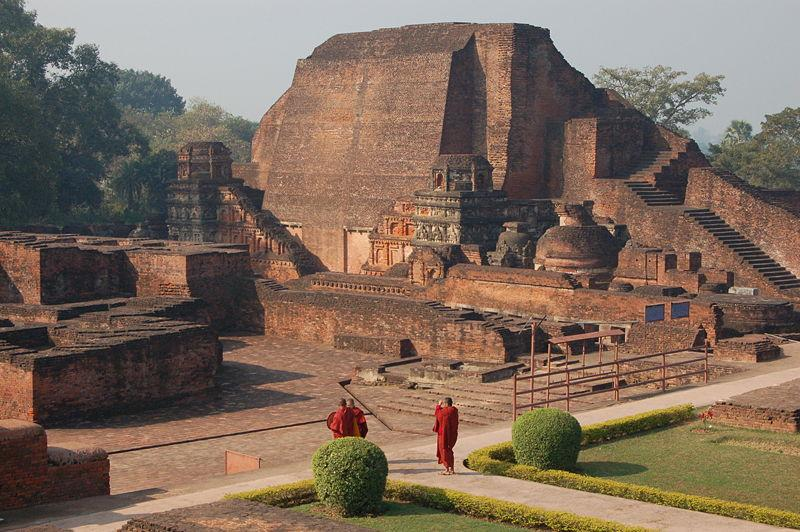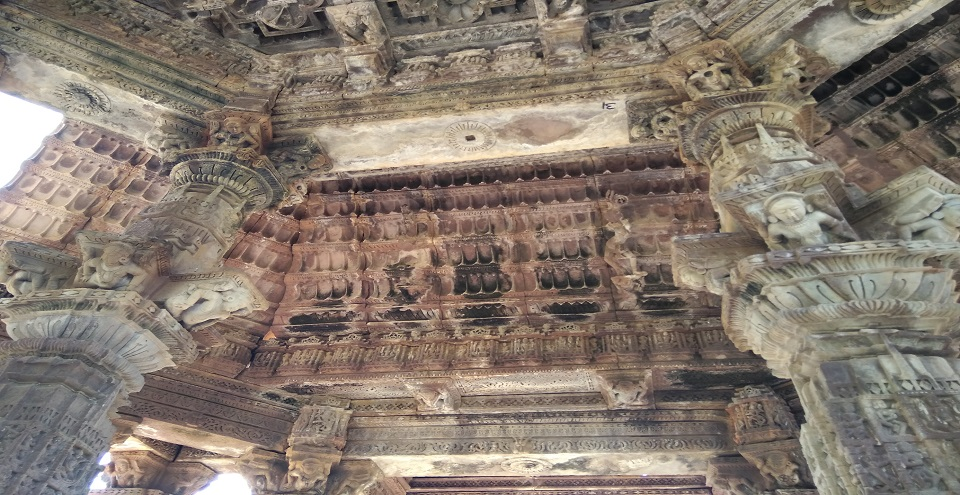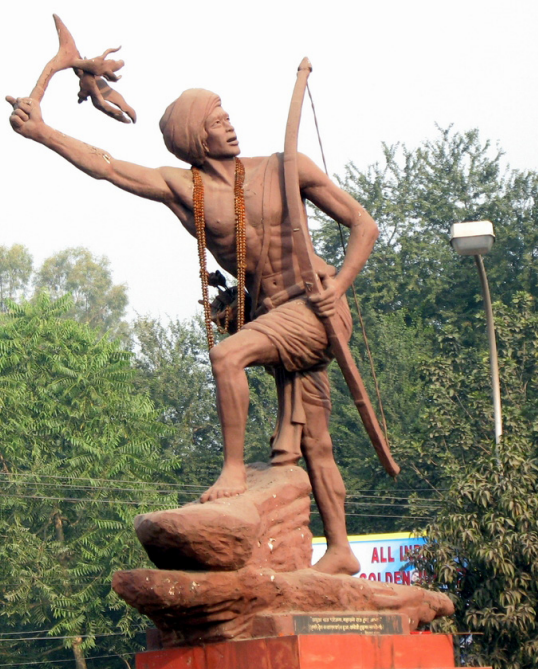Bihar Switch to Hindi
Nalanda University
Why in News?
The economist Sachin Chaturvedi became the Vice-Chancellor of Nalanda University of Bihar on 21st May 2025.
Key Points About Nalanda University
- Founding and Early Flourishing:
- Nalanda University was founded in 427 CE by Gupta Emperor Kumaragupta in present-day Bihar.
- It flourished for around 800 years until the 12th century.
- The university gained prominence under rulers like Harshavardhana and the Pala dynasty.
- Notable Visitors and Scholars:
- Xuanzang (Hsuan Tsang), a 7th-century Chinese Buddhist monk, studied at Nalanda for about five years and brought back many scriptures to China.
- Another Chinese pilgrim, I-Tsing, visited in 670 CE and documented Nalanda’s large student population (around 2,000 students) and funding from 200 villages.
- Nalanda attracted students from across Asia, including China, Mongolia, Tibet, and Korea.
- Scholars like Nagarjuna, Aryabhatta, and Dharmakirti made significant intellectual contributions.
- The region is also spiritually significant, as Buddha and Mahavira meditated nearby.
- Attacks and Decline:
- Nalanda suffered attacks by the Hunas (5th century) and the Goudas (7th century), both causing destruction but followed by restoration efforts.
- The final blow came in 1193 CE when Bakhtiyar Khilji destroyed the university.
- It was rediscovered in the 19th century by British surveyors Francis Buchanan-Hamilton and Sir Alexander Cunningham.
- Revival Efforts:
- The idea to revive Nalanda gained momentum in the early 2000s, with support from former President A.P.J. Abdul Kalam, the Singapore government, and East Asian Summit leaders.
- The revival is envisioned as a regional knowledge hub emphasizing collaboration between India and East Asian countries.
- Legal and Institutional Framework:
- The Nalanda University Act was passed by the Indian Parliament in 2010, providing the legal basis for the new institution.
- The Bihar government allotted a 455-acre site near the ancient ruins for the university campus.
- Campus Design and Features:
- The campus was designed by eminent architect B.V. Doshi, blending eco-friendly principles with modern amenities.
- It is a ‘Net Zero’ Green Campus, with features including:
- Solar power plant
- Water treatment and recycling systems
- Extensive water bodies covering 100 acres
- Academic Programs:
- Nalanda University now offers postgraduate courses in fields such as Buddhist Studies, Historical Studies, Ecology and Environmental Studies, and International Relations.
- Recognition:
- The ruins of ancient Nalanda University were declared a UNESCO World Heritage Site in 2016, highlighting its global cultural significance.
Rajasthan Switch to Hindi
ASI to Restore Bhand Devra Temple in Rajasthan
Why in News?
The Archaeological Survey of India (ASI) is set to restore the 10th-century Bhand Devra temple in Rajasthan’s Baran district, often hailed as the state’s "mini Khajuraho."
Key Points
- Architectural Style and Location:
- The Bhand Devra temple, located on the bank of the Ramgarh Crater in Baran district, is built in the distinctive Nagara architectural style.
- Its resemblance to the temples of Khajuraho is striking, earning it the nickname “Rajasthan’s mini Khajuraho.”
- Historical Background and Patronage:
- The temple was originally built as a victory monument by King Malaya Verma of the Nagavanshi dynasty.
- It received renewed patronage in 1162 CE when King Trishna Verma of the Meda dynasty undertook its restoration.
- These successive contributions reflect the temple’s enduring historical and dynastic importance.
- Neglect and Loss of Heritage:
- Years of neglect and apathy have left the temple damaged, with crumbling structures and stolen idols eroding its rich heritage.
- A Geological and Cultural Wonder:
- The adjacent Ramgarh Crater, formed by an asteroid impact around 165 million years ago, is among India’s rare geo-heritage sites.
- It is a meteor impact crater of 3.5 kilometres diameter in Kota plateau of Vindhya range located adjacent to Ramgarh village in Baran district in Rajasthan.
- It is officially recognized as India’s third crater, with a diameter between the 14 km Dhala crater in Madhya Pradesh and the 1.8 km Lonar crater in Maharashtra.
Nagara or North Indian Temple Style
- About:
- Commonly found in northern India, Nagara-style temples are marked by a curvilinear tower (Shikhara), sanctum sanctorum (Garbhagriha), and pillared hall (Mandapa).
- These temples are usually constructed on a raised stone platform (Jagati) with steps leading to the entrance.
- The ground plan of a Nagara temple is typically square or rectangular with a four-sided layout.
- Shikhara (Curvilinear Tower):
- Early Nagara temples had a single Shikhara, but later ones often featured multiple towers.
- Garbhagriha (Sanctum Sanctorum):
- Located directly beneath the tallest Shikhara, the Garbhagriha houses the main deity.
- It represents the spiritual core of the temple and is often devoid of elaborate ornamentation, signifying inner sanctity.
- Jagati and Pitha (Elevated Platforms):
- Nagara temples rest on a high platform known as Jagati, which elevates the temple both physically and symbolically.
- Adhisthana (Base Platform):
- Rising above the Pitha and Jagati is the Adhisthana, the base platform upon which the superstructure (temple tower and walls) is constructed.
- Shikhara (Curvilinear Tower):
Khajuraho Temple
- About:
- Built by the Chandela dynasty in the 10th and 11th centuries, these temple groups present a unique example of architecture and sculpture.
- The number of temples built in the Nagara style has now reduced to only 20, among which the temple of Kandariya Mahadev is especially famous.
- The temples here belong to two religions – Jain and Hindu.
- World Heritage Site:
- It was included in the list of UNESCO World Heritage Sites in 1986.
Archaeological Survey of India (ASI)
- ASI, under the Ministry of Culture, is the premier organisation for the archaeological research and protection of the cultural heritage of the nation.
- Ancient Monuments and Archaeological Sites and Remains (AMASR) Act, 1958 governs the functioning of ASI.
- It administers more than 3650 ancient monuments, archaeological sites and remains of national importance.
- Its activities include carrying out surveys of antiquarian remains, exploration and excavation of archaeological sites, conservation and maintenance of protected monuments etc.
- It was founded in 1861 by Alexander Cunningham- the first Director-General of ASI. Alexander Cunningham is also known as the “Father of Indian Archaeology”.
Jharkhand Switch to Hindi
Birsa Munda
Why in News?
The Lok Sabha Speaker Om Birla visited the Jail Museum in Ranchi, Jharkhand, on 25th May 2025 and paid tribute to Bhagwan Birsa Munda.
- The visit aimed to honor Munda’s contribution to tribal rights and cultural heritage.
Key Points
- About: Birsa Munda was a tribal freedom fighter, religious reformer, and folk hero, who played a key role in tribal resistance against British rule in India.
- Early Life:
- Birth: Born in Ulihatu on 15th November 1875, now in Jharkhand's Khunti district, to a poor sharecropper (sajhadar) family.
- Community: Belonged to the Munda tribe, a major Adivasi community of the Chotanagpur plateau.
- Early Name: Daud Munda, after his father briefly converted to Christianity.
- Education and Early Influences:
- Attended local schools under the guidance of Jaipal Nag.
- Studied at a missionary school and later at BEL school in Chaibasa for four years.
- Was influenced by Christianity but later rejected it due to cultural and religious differences.
- Influenced by Vaishnavism and Anand Panre (a munshi), leading him to form his own spiritual sect.
- Became known as Bhagwan (God) by his followers and founded the Birsait sect.
- He is lovingly called "Dharti Aaba" (Father of the Earth) by his followers.
- Beliefs and Teachings:
- Promoted monotheism through the worship of Singhbonga, a tribal deity.
- He campaigned against alcoholism, belief in black magic and superstitions, and forced labour (beth begari).
- Encouraged clean living, hygiene, and spiritual unity.
- Taught pride in tribal culture and community land ownership.
- Resistance Against Colonial Injustice:
- British land policies destroyed the Khuntkatti land system, where land was communally owned.
- Zamindars and thikadars (middlemen) began exploiting tribals, turning many into bonded labourers.
- Birsa educated his people about these injustices and urged them to reclaim their rights.
- Early Life:
- The Ulgulan (Great Rebellion):
- Causes of the Uprising:
- Loss of land, economic hardship, forest alienation, and cultural erosion pushed Birsa to act.
- Gave the call for Ulgulan (rebellion) and urged tribals to stop paying rent.
- Slogan of Resistance: “Abua raj ete jana, maharani raj tundu jana” (Let the queen’s rule end, and our rule begin).
- Course of Revolt:
- The revolt began in 1895 as a response to land encroachment and forced labour policies imposed by the British Raj.
- In 1895, Birsa Munda was arrested on charges of rioting and jailed for two years.
- After his release in 1897, he resumed his efforts, moving village to village to gather support and promote the vision of a tribal-led kingdom.
- Birsa Munda died of cholera in 1900, marking the end of the active phase of the revolt.
- Aftermath and Legacy:
- In 1908, the Chotanagpur Tenancy Act was passed:
- Banned land transfers from tribals to non-tribals.
- Recognized Khuntkatti rights.
- Banned beth begari (forced labour).
- Honouring Birsa Munda:
- Since 2021, 15 November is celebrated as Janjatiya Gaurav Divas (Tribal Pride Day).
- He is remembered as a brave leader, spiritual guide, and visionary.
- Despite dying young, he showed great strategy, courage, and leadership.
- In 1908, the Chotanagpur Tenancy Act was passed:
- Causes of the Uprising:
Uttarakhand Switch to Hindi
Indian Army Launches First FM Radio Station in Uttarakhand
Why in News?
The Indian Army has launched its first FM radio station, named 'Panchshul Pulse,' in the Pithoragarh district of Uttarakhand.
- It was inaugurated by Anindya Sengupta, the General Officer Commanding (GOC) of the Army’s Central Command.
Key Points
- About the Radio Station:
- The station has been named ‘Panchshul Pulse’ to reflect its association with the local Panchshul Brigade of the Indian Army.
- It is operated as part of Operation Sadbhavana, a long-standing Army initiative to build constructive relationships with civilians in strategically important areas.
- Operation Sadbhavana is a humanitarian initiative launched by the Indian Army in the 1990s to support communities affected by terrorism in Jammu & Kashmir and Ladakh.
- It aligns with the Vibrant Villages Programme, which emphasises development, connectivity, and awareness in India’s border areas.
- The station broadcasts on 88.4 FM and can be received within a 12-kilometer radius.
- Objectives of the Initiative:
- It aims to enhance civil-military cooperation by serving as a platform for cultural, historical, and social exchange.
- The station also seeks to raise awareness about the contributions and sacrifices of individuals from the border region.
- Highlights of the Radio Programming:
- The programming places special emphasis on local history, culture, and societal practices.
- It includes content on agriculture and horticulture, which are key occupations in the region.
- The station features stories that celebrate the achievements of martyrs and brave soldiers from the area.
- It also highlights the accomplishments of local sportspersons and individuals working in social and cultural sectors.
Vibrant Villages Programme (VVP)
- About: The programme was approved on 15th February 2023 as a Centrally Sponsored Scheme for the holistic development of villages along India's northern border in 19 districts across 46 blocks in states including Arunachal Pradesh, Himachal Pradesh, Sikkim, Uttarakhand, and Ladakh (UT).
- Focus Areas: Livelihood generation will be promoted through tourism, cultural promotion, skill development, entrepreneurship, as well as agriculture, horticulture, and the cultivation of medicinal plants and herbs.
- The programme will focus on improving infrastructure through road connectivity, housing, renewable energy, etc. along with providing basic amenities such as healthcare, education, sanitation, and community centres.
- Objective: To encourage residents to remain in border villages by providing better infrastructure and livelihood opportunities, enhancing border security and sustainable local development.
- The programme complements the Border Area Development Programme (BADP), which fills infrastructure gaps in border villages within 0–10 km of the international boundary in 16 states and 2 UTs.
- Vibrant Villages Programme–II (VVP-II):
- The VVP-II has been launched for FY 2024–25 to 2028–29 with a budget of ₹6,839 crore to develop villages along international land borders (excluding the northern border).
Uttarakhand Switch to Hindi
Hemkund Sahib
Why in News?
Hemkund Sahib, a revered Sikh shrine in the Chamoli district of Uttarakhand, has been opened to devotees, marking the start of the annual pilgrimage season.
Key Points
Hemkund Sahib
- Hemkund Sahib is nestled at an elevation of approximately 4,329 meters (14,200 feet) above sea level.
- It is beautifully situated on the banks of the serene Hemkund Lake, surrounded by snow-clad Himalayan peaks.
- The beautiful landscape, with glacial waters and alpine meadows, adds to the peaceful and spiritual atmosphere.
- Trekking routes, including the path to the Valley of Flowers, make it a popular place to visit.
- A small stream named Himganga flows out of Hemkund Lake, adding to the ecological richness of the area.
- Spiritual Significance:
- Hemkund Sahib is among the most revered Sikh shrines globally.
- As per the holy Granth Sahib, Guru Gobind Singh Ji, the tenth Sikh Guru, is believed to have meditated at Hemkund Lake in one of his earlier lifetimes.
- The site serves as a symbol of divine reflection, resilience, and purity for devotees.
Sri Guru Gobind Singh Ji
- Early Life:
- Born as Gobind Rai Sodhi on 22 December 1666 in Patna, Bihar, he was the tenth and final Guru of the Sikh faith.
- Son of Sri Guru Tegh Bahadur Ji, the ninth Sikh Guru.
- Born as Gobind Rai Sodhi on 22 December 1666 in Patna, Bihar, he was the tenth and final Guru of the Sikh faith.
- Turning Point and Ascension:
- At the age of nine, after the martyrdom of his father in 1675, he was formally installed as Guru.
- He combined spiritual leadership with martial discipline and literary expression.
- Founding of the Khalsa:
- On the day of Baisakhi in 1699, he established the Khalsa, a martial and spiritual order of saint-soldiers.
- Initiated the Panj Pyare (Five Beloved Ones), introduced Khande Di Pahul (Amrit initiation), and mandated the Five Ks: Kangha (comb), Kesh (uncut hair), Kara (steel bracelet), Kirpan (sword), and Kachhera (shorts)
- He changed his name from Gobind Rai to Gobind Singh.
- Military Struggles and Sacrifices:
- Fought numerous battles against Mughal forces and hill rajas, including at Bhangani (1688), Nadaun (1691), and Muktsar (1705).
- Lost all four sons and mother Mata Gujari to Mughal oppression but remained unshaken in spirit.
- Final Days and Legacy:
- Fatally wounded in 1708 at Nanded by assassins sent by Nawab Wazir Khan of Sirhind.
- Before his death on 7 October 1708, he declared the Guru Granth Sahib Ji as the eternal Guru of the Sikhs, ending the line of personal Gurus.


.png)





.jpg)









.png)


.jpg)



 PCS Parikshan
PCS Parikshan





